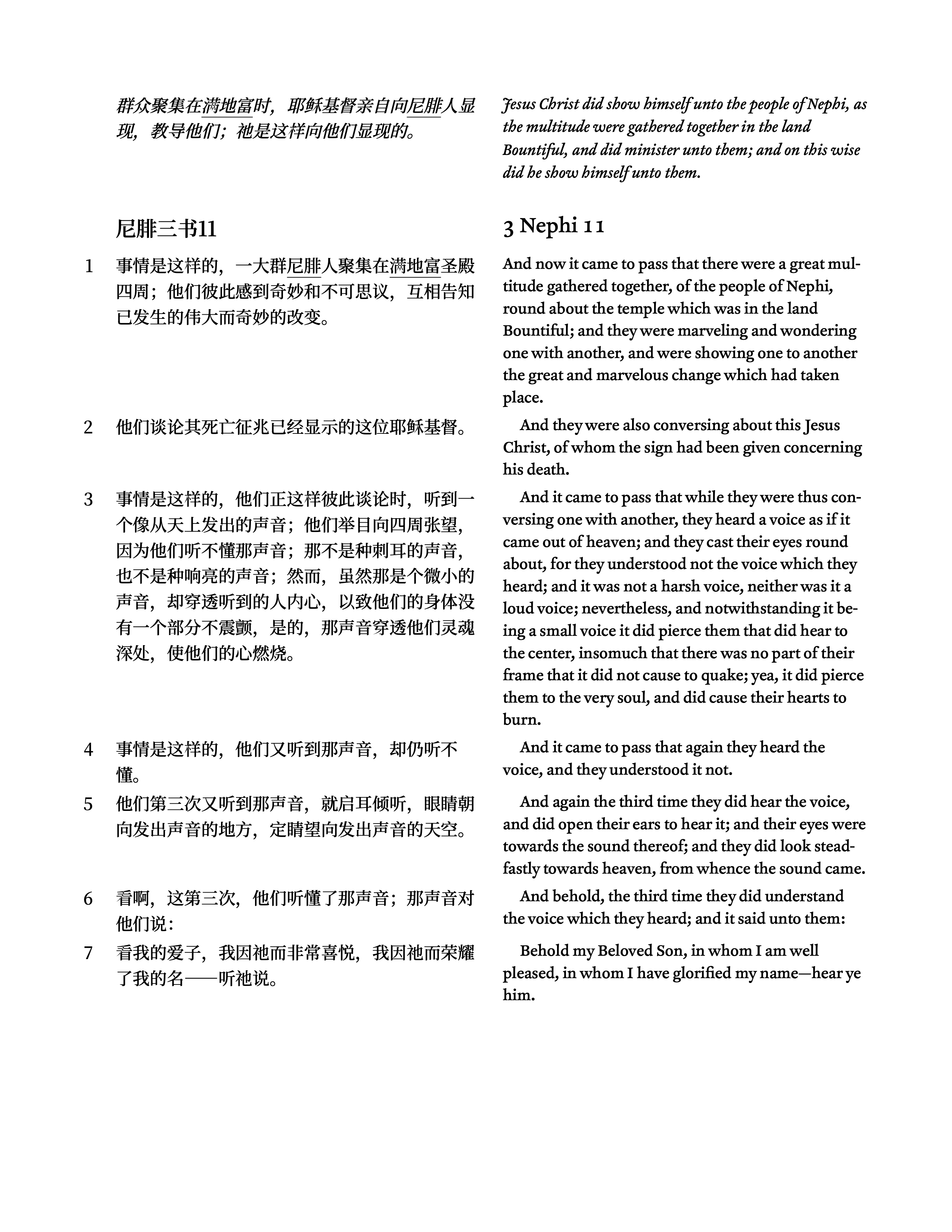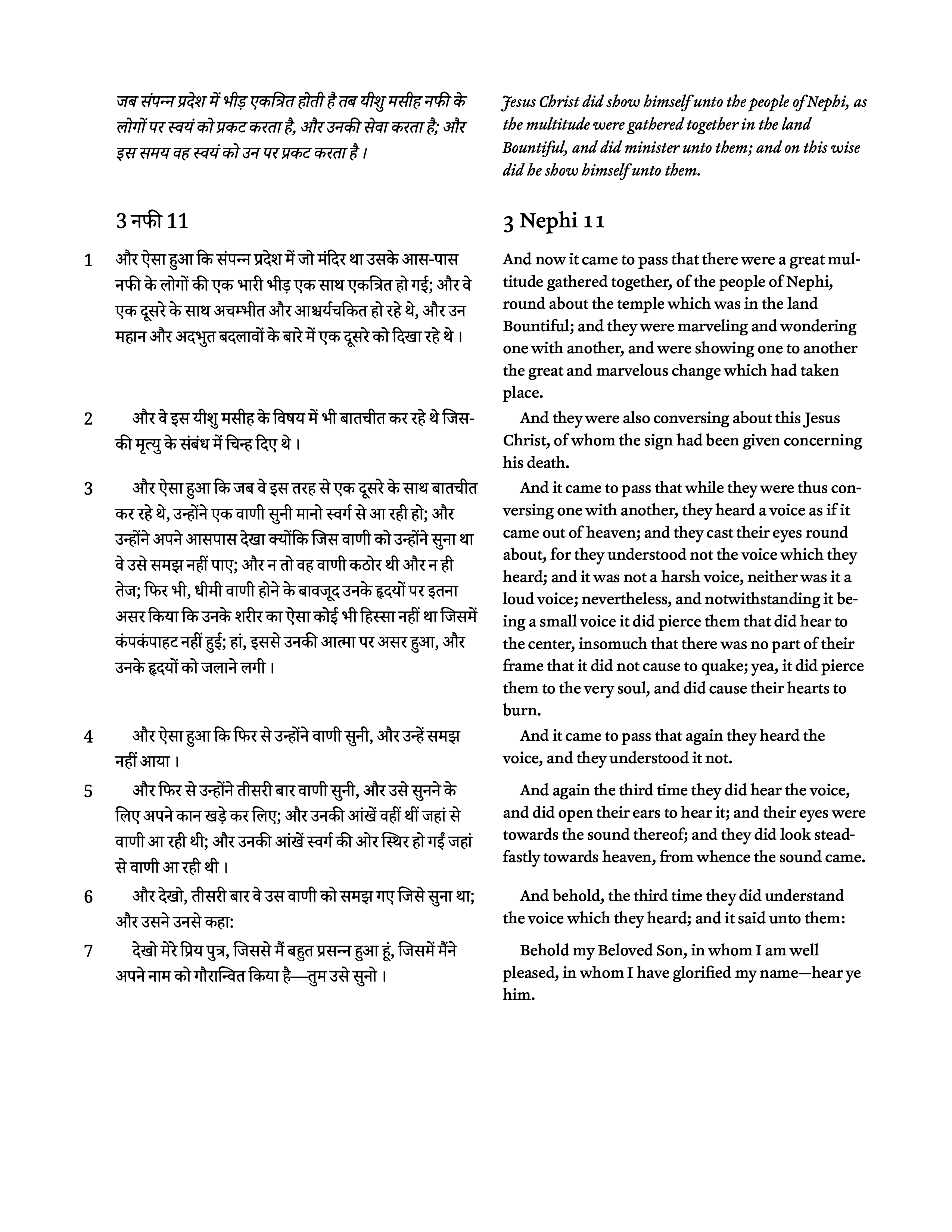And some more parallel language editions of the Book of Mormon:
- Amharic–English
- Armenian–English
- Simplified Chinese–English
- Hindi–English
- Japanese–English
- Khmer–English
- Latvian–English
- Lingala–English
- Lithuanian–English
- Malagasy–English
- Maori–English
- Mongolian–English
- Myanmar–English
- Persian–English
- Samoan–English
- Slovak–English
- Slovenian–English
- Tahitian–English
- Tamil–English
- Telugu–English
- Tongan–English
- Turkish–English





I think my favorite is the Persian.
Also, I made a traditional Chinese version as well, but Firefox hangs when I try to print it. It’s the only language that happened with. Haven’t been able to figure it out yet.